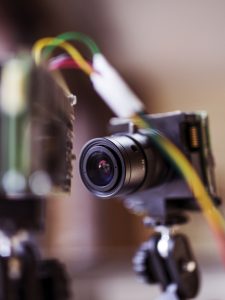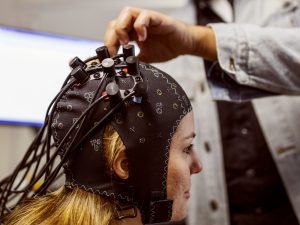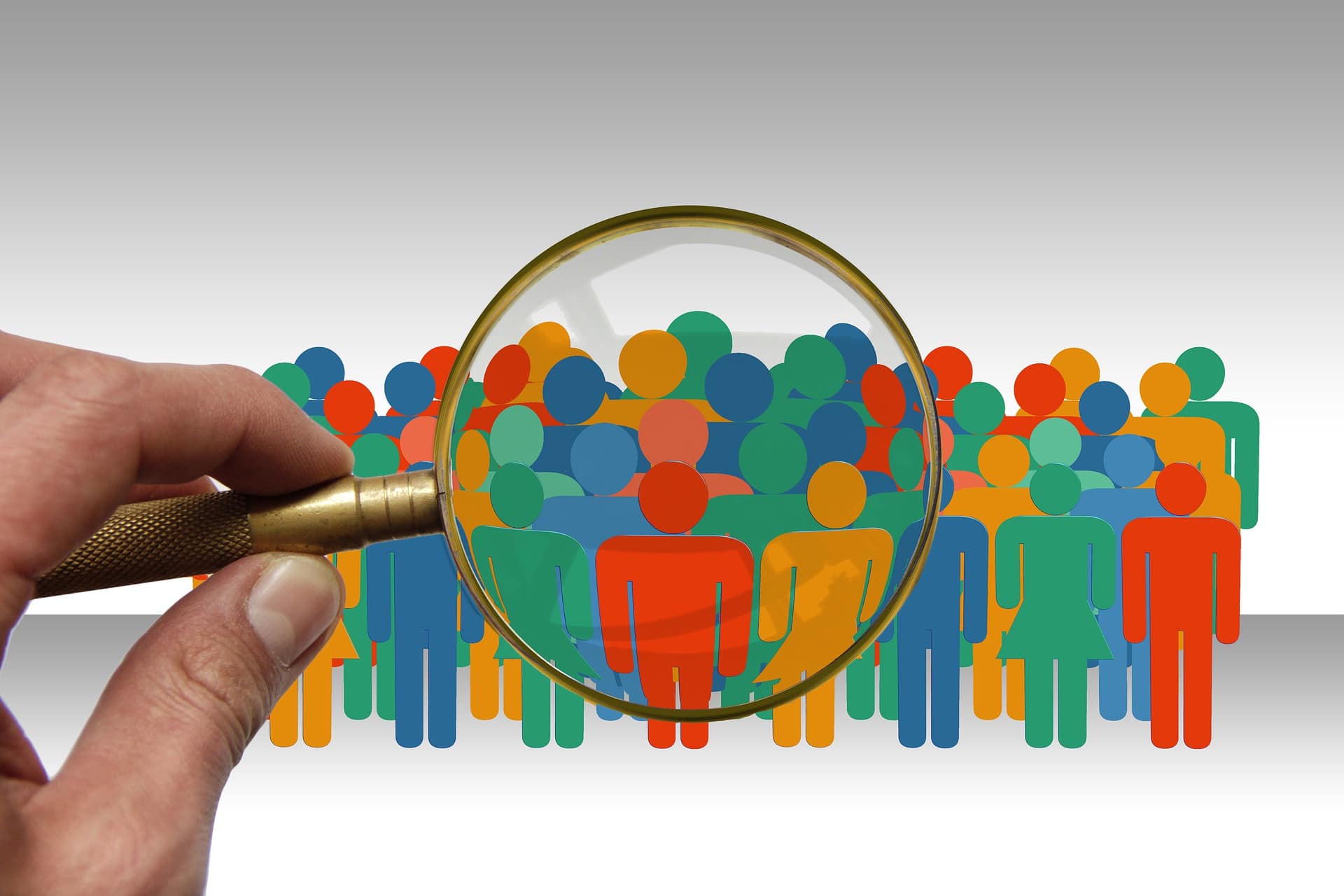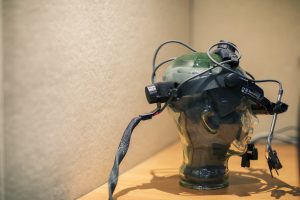8 Observational Research
This chapter derived from 6.5 Observational Research by Paul C. Price, Rajiv Jhangiani, I-Chant A. Chiang, Dana C. Leighton, & Carrie Cuttler is licensed under a Creative Commons Attribution-NonCommercial-ShareAlike 4.0 International License. [1]
Learning Objectives
By the end of this chapter, students must be able to:
- Explain different types of observational research methods
- Choose an appropriate type of method for a particular situation
WHAT IS OBSERVATIONAL RESEARCH?
The term observational research is used to refer to several different types of non-experimental studies in which behavior is systematically observed and recorded. The goal of observational research is to describe a variable or set of variables. More generally, the goal is to obtain a snapshot of specific characteristics of an individual, group, or setting. As described previously, observational research is non-experimental because nothing is manipulated or controlled, and as such, we cannot arrive at causal conclusions using this approach. The data that is collected in observational research studies are often qualitative in nature but they may also be quantitative or both (mixed-methods). There are several different types of observational research designs that will be described below.
NATURALISTIC VS CONTRIVED OBSERVATION
Naturalistic observation is an observational method that involves observing people’s behavior in the environment in which it typically occurs. Thus naturalistic observation is a type of field research (as opposed to a type of laboratory research). Jane Goodall’s famous research on chimpanzees is a classic example of naturalistic observation. Dr. Goodall spent three decades observing chimpanzees in their natural environment in East Africa. She examined such things as chimpanzees’ social structure, mating patterns, gender roles, family structure, and care of offspring by observing them in the wild. However, naturalistic observation could more simply involve observing shoppers in a grocery store, children on a school playground, or psychiatric inpatients in their wards. Researchers engaged in naturalistic observation usually make their observations as unobtrusively as possible so that participants are not aware that they are being studied. Such an approach is called disguised naturalistic observation. Ethically, this method is considered to be acceptable if the participants remain anonymous and the behavior occurs in a public setting where people would not normally have an expectation of privacy. Grocery shoppers putting items into their shopping carts, for example, are engaged in public behavior that is easily observable by store employees and other shoppers. For this reason, most researchers would consider it ethically acceptable to observe them for a study. On the other hand, one of the arguments against the ethicality of the naturalistic observation of “bathroom behavior” is that people have a reasonable expectation of privacy even in a public restroom and that this expectation was violated.
Contrived observation occurs in an artificial environment, such as a lab setting. For example, researchers may wish to measure people’s physiological responses to an ad that is being screened in the university researcher’s classroom.
Source: DW News. [2]
DISGUISED VS UNDISGUISED OBSERVATION
In cases where it is not ethical or practical to conduct disguised naturalistic observation, researchers can conduct undisguised naturalistic observation where the participants are made aware of the researcher’s presence and monitoring of their behavior. However, one concern with undisguised naturalistic observation is reactivity. Reactivity refers to when a measure changes participants’ behavior. In the case of undisguised naturalistic observation, the concern with reactivity is that when people know they are being observed and studied, they may act differently than they normally would. For instance, you may act much differently in a bar if you know that someone is observing you and recording your behaviors and this would invalidate the study. So disguised observation is less reactive and therefore can have higher validity because people are not aware that their behaviors are being observed and recorded. However, we now know that people often become used to being observed and with time they begin to behave naturally in the researcher’s presence. In other words, over time people habituate to being observed. Think about reality shows like Big Brother or Survivor where people are constantly being observed and recorded. While they may be on their best behavior at first, in a fairly short amount of time they are, flirting, having sex, wearing next to nothing, screaming at each other, and at times acting like complete fools in front of the entire nation.
PARTICIPANT VS MECHANICAL OBSERVATION
Another approach to data collection in observational research is participant observation. In participant observation, researchers become active participants in the group or situation they are studying. Participant observation is very similar to naturalistic observation in that it involves observing people’s behavior in the environment in which it typically occurs. As with naturalistic observation, the data that is collected can include interviews (usually unstructured), notes based on their observations and interactions, documents, photographs, and other artifacts. The only difference between naturalistic observation and participant observation is that researchers engaged in participant observation become active members of the group or situations they are studying. The basic rationale for participant observation is that there may be important information that is only accessible to or can be interpreted only by, someone who is an active participant in the group or situation. Like naturalistic observation, participant observation can be either disguised or undisguised. In disguised participant observation, the researchers pretend to be members of the social group they are observing and conceal their true identity as researchers. In contrast with undisguised participant observation, the researchers become a part of the group they are studying and they disclose their true identity as researchers to the group under investigation. Once again there are important ethical issues to consider with disguised participant observation. First, no informed consent can be obtained and second passive deception is being used. The researcher is passively deceiving the participants by intentionally withholding information about their motivations for being a part of the social group they are studying. But sometimes disguised participation is the only way to access a protective group (like a cult). Further, disguised participant observation is less prone to reactivity than undisguised participant observation.
One of the primary benefits of participant observation is that the researcher is in a much better position to understand the viewpoint and experiences of the people they are studying when they are a part of the social group. The primary limitation with this approach is that the mere presence of the observer could affect the behavior of the people being observed. While this is also a concern with naturalistic observation when researchers because active members of the social group they are studying, additional concerns arise that they may change the social dynamics and/or influence the behavior of the people they are studying. Similarly, if the researcher acts as a participant-observer there can be concerns with biases resulting from developing relationships with the participants. Concretely, the researcher may become less objective resulting in more experimenter bias.
Exhibit 1: Different types of equipment are used to study physiological/neurological responses in humans.
|
|

Neuromorphic camera/sensor equipment |
 |
Eye-tracking equipment, Neuromorphic camera/sensor equipment © 2022 Western Sydney University taken by Sally Tsoutas Western Sydney University Photographer is licensed under an Attribution-NonCommercial-NoDerivatives 4.0 International
In many situations, the means of observation are mechanical rather than human. This involves video cameras, traffic counters, checkout scanners, smartphones, and a range of devices that measure physiological responses. These devices include eye-tracking monitors, pupilometers, psychogalvanometers, voice pitch analyzers, and instruments to measure neurological signals.
STRUCTURED VS UNSTRUCTURED OBSERVATION
In structured observation, the emphasis is on gathering quantitative rather than qualitative data. Researchers using this approach are interested in a limited set of behaviors. This allows them to quantify the behaviors they are observing. In other words, structured observation is less global than naturalistic and participant observation because the researcher engaged in structured observations is interested in a small number of specific behaviors. Therefore, rather than recording everything that happens, the researcher only focuses on very specific behaviors of interest. For example, a marketer may be interested in the number of people entering a mall, or the number of times people stop to take a look at a displayed ad. Unstructured observation, on the other hand, is flexible and more informal. There is no checklist for the researcher to follow. The researcher may observe all aspects of a phenomenon and then provides details about things that he/she found to be relevant in understanding a situation. This technique can be more subjective than the structured approach.
When the observations require a judgment on the part of the observers (e.g., do customers look happy while shopping in a store?) this process is often described as coding. Coding generally requires clearly defining a set of target behaviors. The observers then categorize participants individually in terms of which behavior they have engaged in and the number of times they engaged in each behavior. The observers might even record the duration of each behavior. The target behaviors must be defined in such a way that different observers code them in the same way. In one study, for example, researchers video-recorded a subset of their participants’ reactions and had two observers independently code them. The two observers showed that they agreed on the reactions that were exhibited 97% of the time, indicating good interrater reliability.
One of the primary benefits of structured observation is that it is far more efficient than naturalistic and participant observation. Since the researchers are focused on specific behaviors this reduces time and expense. Also, oftentimes the environment is structured to encourage the behaviors of interest which again means that researchers do not have to invest as much time in waiting for the behaviors of interest to naturally occur. Finally, researchers using this approach can clearly exert greater control over the environment. However, when researchers exert more control over the environment it may make the environment less natural which decreases external validity. It is less clear for instance whether structured observations made in a laboratory environment will generalize to a real-world environment. Furthermore, since researchers engaged in structured observation are often not disguised there may be more concerns with reactivity.
OBSERVATION OF PHYSICAL EVIDENCE
Market researchers are able to gather data by observing physical evidence which can provide key insights. Artefacts – such as food cans in garbage bins and counting of physical inventories are key methods that can be used. Content analysis of ads, newspapers, images, or memos can help researchers understand certain aspects of a phenomenon.
- Price, PC, Jhangiani, R Chiang, ICA, Leighton, DC & Cuttler, C 2017, 'Observational research' in Research methods in psychology, Pressbooks, chapter 6.5, viewed 2 March 2022, <https://opentext.wsu.edu/carriecuttler/chapter/observational-research/>. ↵
- DW News 2013, Market researchers observe where we look: made in Germany, online video, 4 September, viewed 3 March 2022, <https://www.youtube.com/watch?v=Hatmm84sqm0>. ↵



